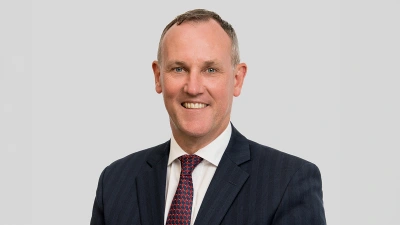Why financial planners must reassure their clients in hard times


If Australian financial planner sentiment is to follow the patterns of the past decade, then the global markets meltdown experienced in the opening days of August is likely to have seen sentiment drop to levels not seen since the darkest days of the global financial crisis.
What we know about financial planner sentiment is that it is inevitably a reflection of client sentiment, which in turn, is closely aligned with the state of the markets.
Indeed, an analysis of planner sentiment over the past decade suggests that the highs and lows track very closely the upward and downward movements in the ASX 200.
Every now and then, there occur major market events which take ordinary investors well beyond their comfort zones and which place greater demands on the relationship between planners and their clients.
Thus, whatever the mood of financial planners, they ought to have been very busy over the past few weeks providing reassurance and counsel to clients.
Some of that contact ought to have been face-to-face, but very often phone and email contact will have sufficed.
At the very least, clients should have been provided with an email appraisal of market conditions and the planner’s (or dealer group’s) analysis.
If planners, when analysing how they handled the opening weeks of August, did not make contact with a significant number of their clients via any of the above means, then they must ask themselves whether the Government has a point with respect to imposing the two-year opt-in arrangements contained in its Future of Financial Advice (FOFA) proposals.
While the Assistant Treasurer and Minister for Financial Services, Bill Shorten, has signalled the Government’s willingness to rethink its ban on individually-advised risk commissions within superannuation, he remains adamant that the two-year opt-in does not represent an unreasonable expectation in terms of the relationship between planners and their clients.
Extreme events such as the 1987 share market crash, the global financial crisis and this year’s early August market meltdown must therefore be regarded as something of a litmus test with respect to whether planners have the sort of ongoing relationships with their clients which preclude the need for opt-in.
While it is broadly accepted within the financial planning industry that the administrative burdens and costs involved in meeting the proposed opt-in requirement will be considerable, planners will struggle to sustain their arguments in the absence of being able to show they are appropriately communicating with their clients, and the more so during extreme market events.
Overcoming client lethargy represents one of the major cost factors in opt-in, but planners can certainly help their cause if they are being heard by their clients, even if they aren’t seen.
Recommended for you
In this week’s episode of Relative Return Unplugged, Dr Vladimir Tyazhelnikov from the University of Sydney’s School of Economics joins the show to break down the shifting sands of global trade dynamics and attempt to understand the way US President Donald Trump is employing tariffs.
In this week’s special episode of Relative Return Unplugged, we present shadow treasurer Angus Taylor’s address at Momentum Media’s Election 2025 event, followed by a Q&A covering the Coalition’s plans for the financial services sector.
In this week’s episode of Relative Return Unplugged, AMP chief economist Shane Oliver joins the show to unravel the web of tariffs that US President Donald Trump launched on trading partners and take a look at the way global economies are likely to be impacted.
In this episode of Relative Return, host Laura Dew is joined by Andrew Lockhart, managing partner at Metrics Credit Partners, to discuss the attraction of real estate debt and why it can be a compelling option for portfolio diversification.












